How to Build Big Cities for Biking
By: Kiran Herbert, local programs writer
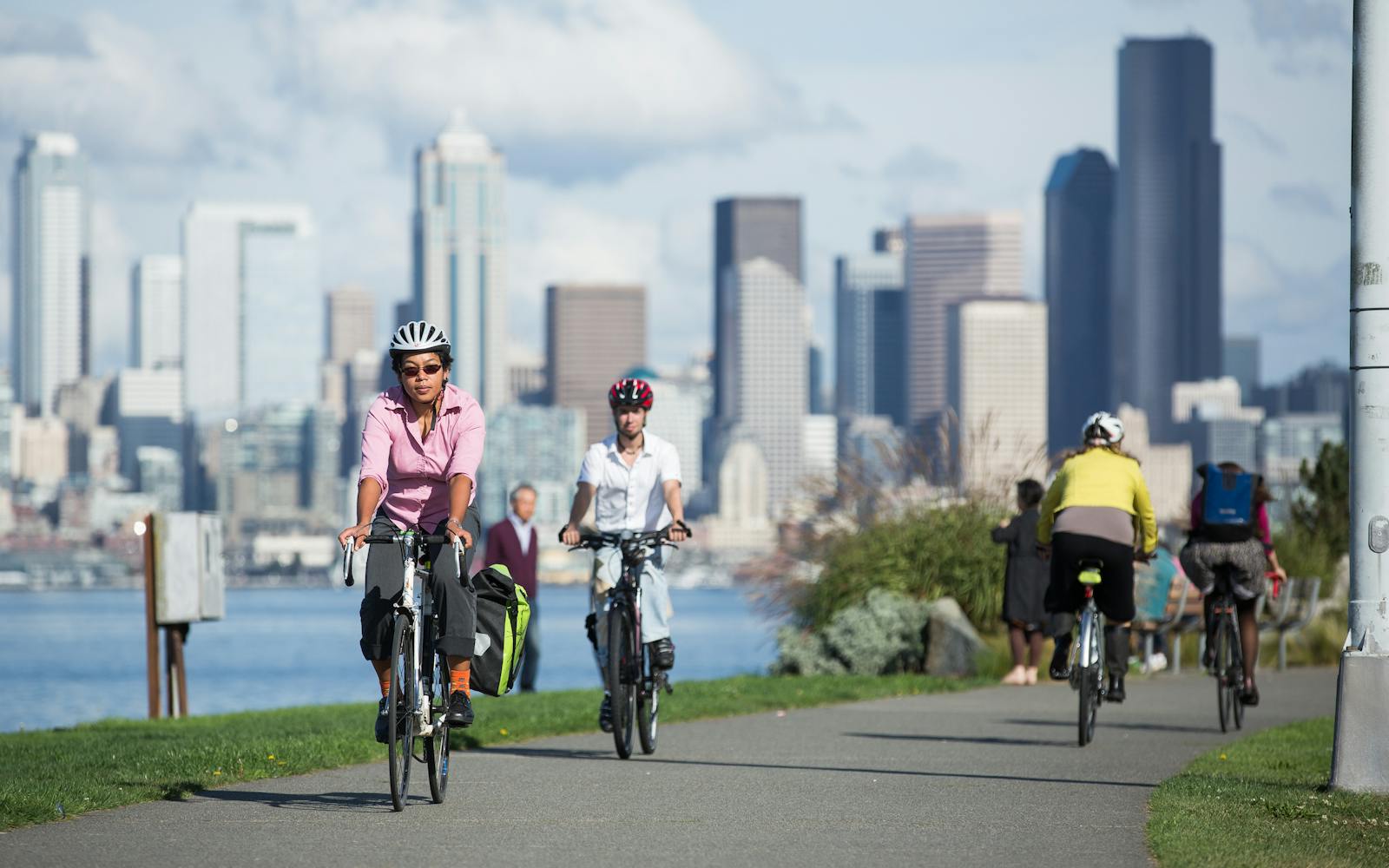
These six U.S. cities are top of class when it comes to their bike networks, infrastructure and political willpower.
What makes a great bicycling city?
At PeopleForBikes, we put a lot of emphasis on a city’s bike network and its residents’ ability to safely bike to the things they need, such as transit connections, jobs, schools, grocery stores and hospitals, as well as the things they like, such as recreational amenities like parks, trails or major shopping centers. We also account for a community’s perception of its local bike scene — every year, we conduct an online survey to hear from people that live, work and play in the cities we’re rating.
Based on a combination of their network and community scores, all of the places on this list ranked among the top 10 cities in the U.S. Although some of these scores might seem low, cities with scores of 50 and up demonstrate higher ridership, improved safety and greater access than their peers. We spoke to experts in each location to better understand what it takes to build better bicycling communities on a large scale.
San Francisco, California
Score: 60
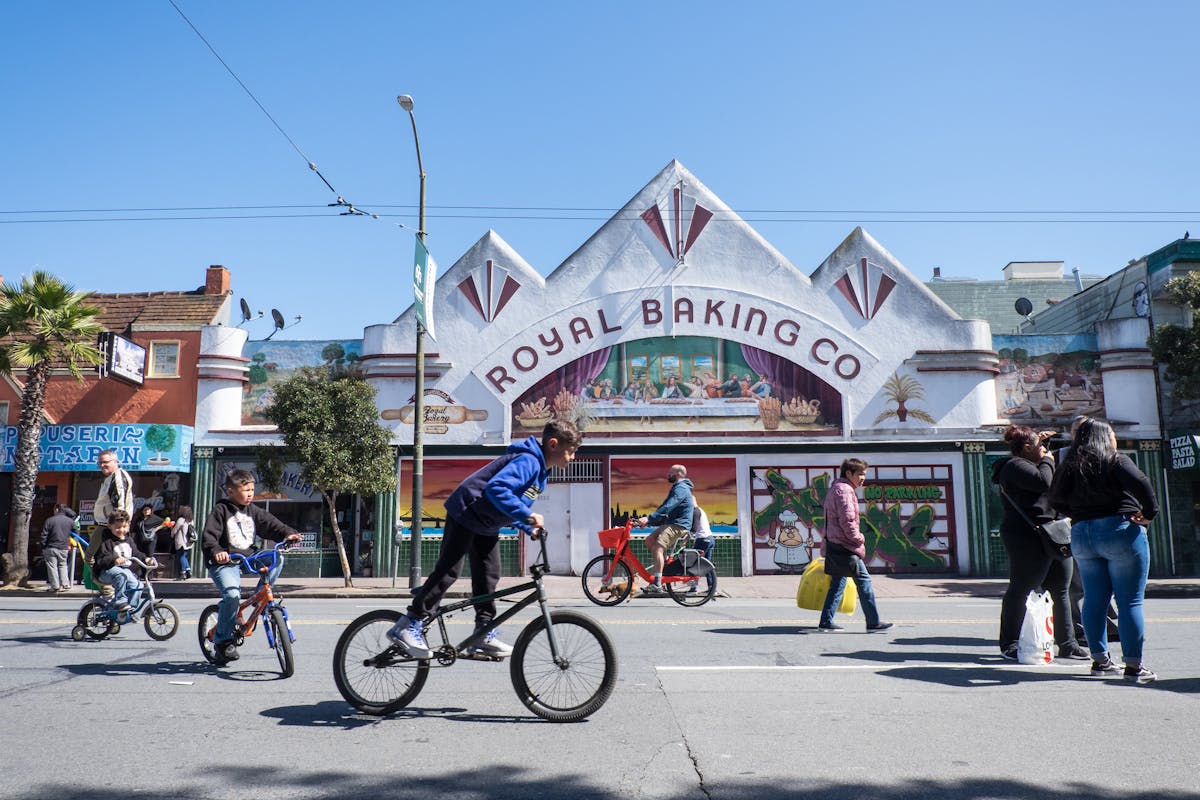
San Francisco’s bike culture is long-established and draws from a 30-plus year history of Critical Mass, a form of direct action where people meet at a certain location and time in order to amplify bicycling via a large group ride.
“The culture in San Francisco is very supportive of change and you have various organizations pushing for improvements,” said Mike Sallabarry, senior transportation engineer with the city. “It’s not just about on-street facilities, it’s about the different programs and events — all those things add up.”
From big events like Bike to Work Day to smaller workshops and educational gatherings, there are plenty of opportunities for folks looking to build community around bikes in the Bay Area. Even before the pandemic hit, San Francisco had a vibrant Sunday Streets program, a nod to more livable, car-free neighborhoods. Since the city is relatively small — roughly 47 square miles — many residents naturally see driving as unnecessary and unsustainable.
“San Francisco gets a reputation for being a hilly city, which of course it is, but so much of our network bypasses those steep hills,” said Matt Lasky, a project manager at San Francisco Municipal Transportation Agency (SFMTA). “Recently, with e-bikes, it’s become even more manageable and accessible.”
San Francisco’s commitment to building out additional bicycle infrastructure has also helped, as has the pace at which it's doing so. In 2019, San Francisco Mayor London Breed pledged to build 20 miles of new protected bike lanes over the course of two years, doubling down on the city’s Vision Zero plan by focusing on high injury zones. This May, Mayor Breed announced that the city had exceeded that goal, laying out additional plans for more and better bike parking, as well as safer and slower streets.
“Our network build-out has accelerated significantly in recent years, primarily due to our quick build program,” said Sallabarry, noting that the process involves using low-cost materials to focus on safety improvements. Adds Lasky, “The program allows us to evaluate what’s working and then iterate on it.”
San Francisco now boasts an extensive, connected network of 450-plus miles of bike lanes, roughly 40 miles of which are protected. The city hopes to release a map of the network that shows the existing bikeways and where gaps exist, allowing for the prioritization of connectivity going forward.
New York City, New York
Score: 44-62
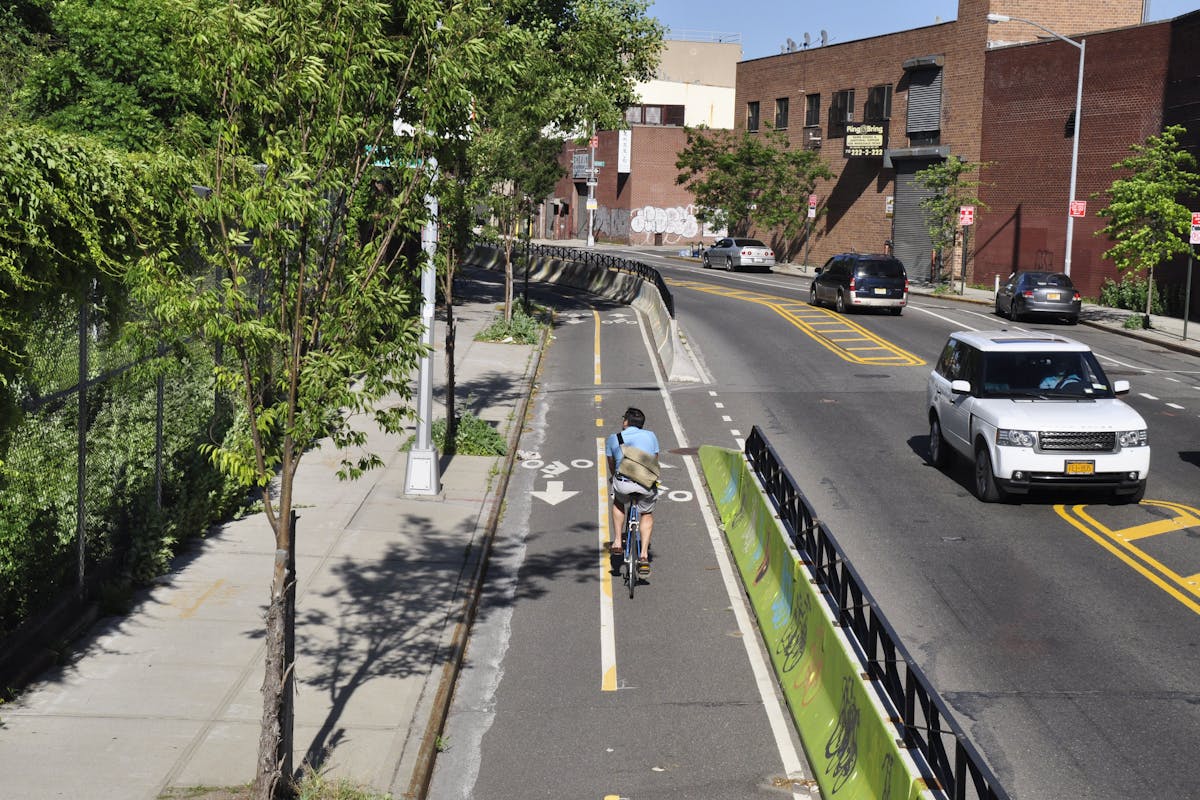
Since all of New York City's five boroughs could be considered a city in and of itself, our City Rating program scores each borough individually. Of the five, four ranked in the top 10 for big cities with Brooklyn scoring highest (62), followed by Manhattan (55), Queens (54) and the Bronx (44). Although automobile ownership in New York City is lower than the national average (about 45% versus around 90%), it’s not surprising that the one borough lagging behind when it comes to bicycling, Staten Island, also has the highest rates of car ownership (83%).
New York City also boasts the highest number of transit users in the country and in many areas, is densely populated. In Manhattan, which only spans about 22 square miles, there’s the added benefit of everything being relatively close together. When it comes to bike infrastructure, however, what really sets the city apart is its commitment to careful planning combined with rapid implementation. Over the last six years, the city built more than 50 miles of bike lanes each year. Even more impressive, it averaged more than 20 miles of protected lanes per year.
“I think the most important thing you can do [for bicycling] is to build more bike infrastructure,” said Ted Wright, director of the bicycle and greenway program at the NYC Department of Transportation. “You can’t just do protected bike lanes, you can’t only do capital projects — you have to deal with what’s out there right now, listen to where people are riding, use your planners to think about where people could be riding, and go out and build stuff.”
New York City’s aggressiveness when it comes to construction has paid off, with the number of bicyclists in the city jumping roughly 8% per year since the ‘80s. In particular, the city prioritized projects that have immediate benefits, such as bike lanes across bridges or greenways, what Wright refers to as “beautiful highways for bikes.” The city relies on both data and listening to its stakeholders — accounting for all users and modes is especially crucial when space is at a premium. By improving on projects that weren’t quite right, New York City has managed to build trust and success over time.
Seattle, Washington
Score: 55
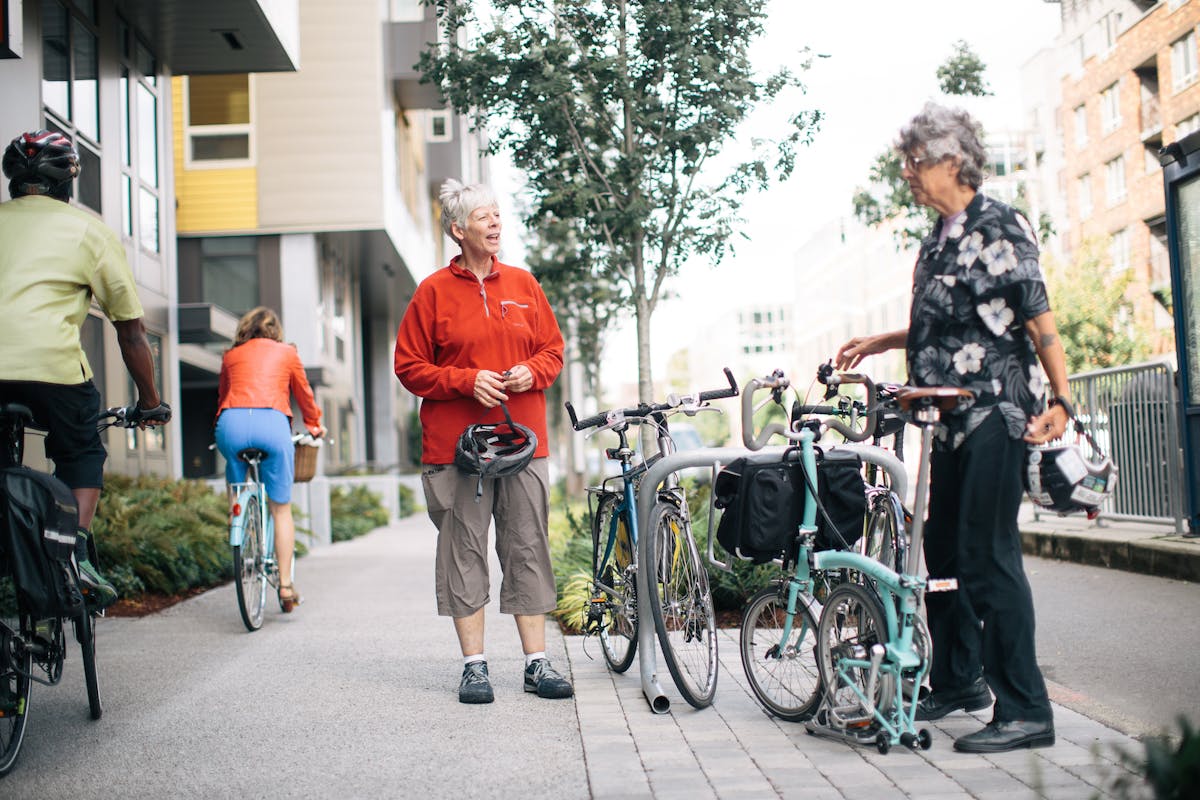
Despite having a reputation for rain, the climate in Seattle is relatively temperate. When it does rain, it tends to be more of a constant drizzle rather than a downpour and the city rarely gets snow or intense heat. Add in the fact that Seattle is known as an outdoorsy place — it’s the birthplace of REI, after all — and you get a populace that’s already primed for biking.
“We also have a great advocacy community that has a good relationship with the city,” said Serena Lehman, senior transportation planner with the city. “They push the city to be bolder and prioritize funding for bike projects.”
Even internally, Lehman notes that in the last 15 years, bike champions have become ubiquitous, helping to connect bicycling to transit, advocate for connections from certain neighborhoods or allocate funds for underserved communities. Seattle Mayor Jenny Durkan has also made a big commitment to reducing greenhouse gas emissions, opening up substantial funding for bikes and allowing for the completion of critical infrastructure segments that connect Seattle’s larger network.
“We prioritize our unbuilt segments based on several factors,” said Lehman. “The top factors being safety, then equity and finally connectivity, ridership and livability.”
In 2014, Seattle adopted an ambitious bicycle master plan, prioritizing 226 new citywide network miles to be completed by 2030. Today, the city has completed 33 miles and plans to have another 55 done by 2024. In order to make it easier for new people to ride and commute, Seattle prioritized building key bicycle connections to transit, emphasizing first and last mile connections.
Portland, Oregon
Score: 54
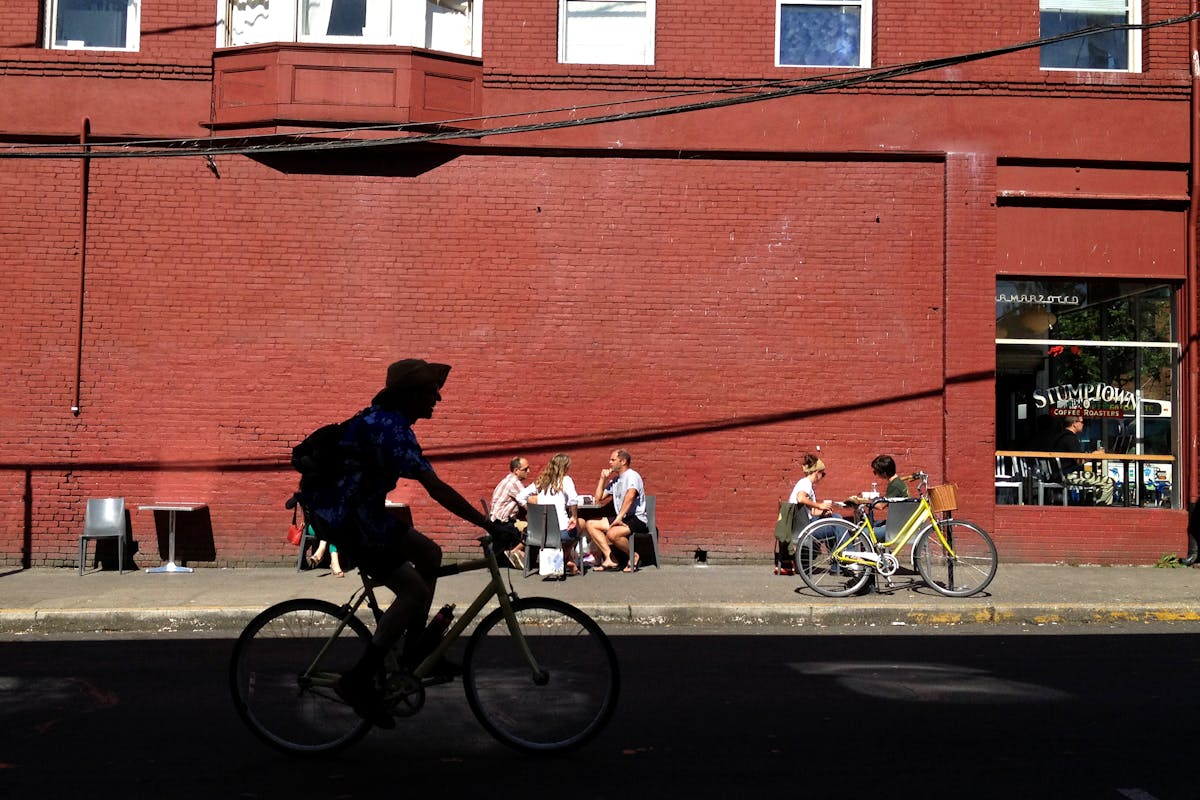
Portland has a reputation for being a bikeable city, something that’s only bolstered by events like Sunday Parkways, where streets are closed for folks to “discover active transportation” and the World Naked Bike Ride, meant to highlight the vulnerability of bicyclists. When new folks move to Portland or relocate in town, the city’s SmartTrips program delivers tailored emails and materials showcasing various active transportation options for their new residence. Unsurprisingly, Portland has the highest percentage of bike commuters for any large U.S. city.
“There’s a long history of advocacy at the political level that stretches back decades, as well as advocacy at the community level,” said John Brady, communications director at the Portland Bureau of Transportation. “There's a tradition of biking in Portland that has flowed both on the policy side of things and also on the culture side of things.”
Portland continues to build infrastructure at an impressive clip, emphasizing network connections between neighborhoods through its Missing Links program. As a bridge town with major freeways that bisect its core, the city has begun to build north-west crossings over interstates and bicycle-pedestrian bridges across the Willamette River. In order to bring in new bikers, the city also focused on expanding greenways and building more infrastructure in East Portland, where more historically marginalized communities reside.
“As a city, we’ve begun assessing everything we do through the lens of racial justice, and biking isn't immune from that,” said Brady, noting that PBOT has a full-time equity and inclusion manager and that they’ve also prioritized the expansion of their fully electric bike share system. “There’s safety in the sense of not being hit by a car while riding, but there’s also personal safety from bigotry and violence. We can build a really great bicycle facility but if Black or Latino Portlanders don’t feel safe taking advantage of it, then we’re not completely doing our job.”
Philadelphia, Pennsylvania
Score: 50
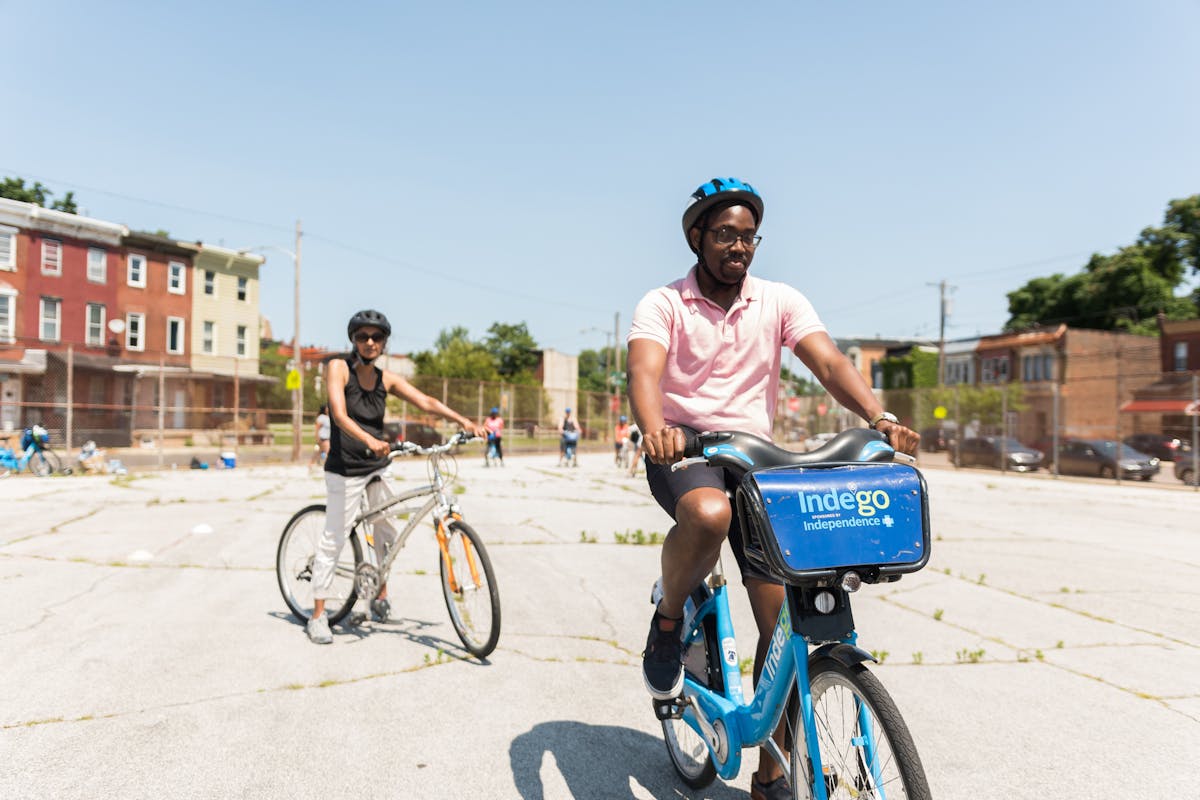
Every city on this list has a bike share program but, when it comes to successful community outreach, none quite compare to Philadelphia's Indego system. The city of Philadelphia is a founding member of the Better Bike Share Partnership and from its inception, Indego has maintained strong equity and educational components, working to bring biking to low-income and historically marginalized communities.
“In our bike network development, we've been able to learn from Indego on how to closely work with neighborhoods,” said Kelley Yemen, Philadelphia’s director of complete streets. “Maybe what’s needed isn’t a bike lane but rather street calming on an adjacent street — we have those conversations and really work to meet people where they’re at as we expand.”
Philadelphia is also working to build out a high-quality, safe and connected network, which it hopes will not only bring in new riders but also keep them riding. The city has consistently seen an increase in bicycling year over year and to keep its numbers growing, Philadelphia is in the process of converting to LED lighting citywide and making all-season bicycling more accessible through winter snow clearing efforts.
“We’re not the richest city but we try to leverage every investment we have to make Complete Streets,” said Yemen, noting that Philadelphia is opportunistic when it comes to development. “When PennDOT is reconstructing a bridge or a street is getting repaved, we’re filling in gaps and making bike network connections.”
Detroit, Michigan
Score: 45
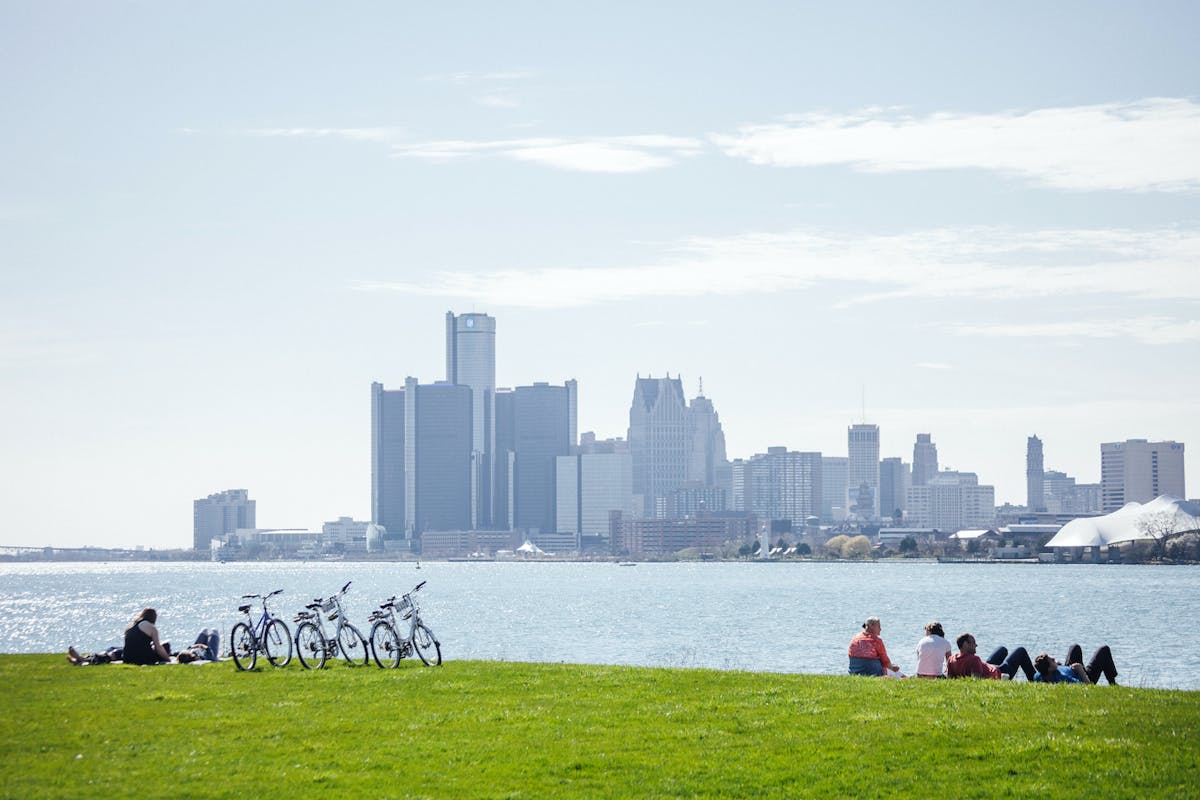
While a score of 45 leaves a lot of room for improvement, we’re including Detroit in our list based on its progress. The city built its first protected bike lane in 2017 and by the end of this year, will have added another 43 miles of protected bike lanes. That dramatic increase in quality infrastructure has been bolstered by Detroit Mayor Mike Duggan, who loves two-way protected bike lanes, as well as the transfer of key employees from the Planning and Development Department to the Department of Public Works.
“We weren’t making a lot of headway before,” said Erika Linenfelser, an urban planner with the city who moved departments with her boss, Deputy Director of Complete Streets Caitlin Marcon. “The Department of Public Works is the one that installs and maintains the bike lanes — for it to now have a Complete Streets focus has been a fundamental shift.”
Detroit is also relatively flat and blessed with incredibly wide streets, a vestige from the time when it earned the nickname Motor City. In the decades since then, Detroit has lost most of its car manufacturing business and its population, declaring bankruptcy in 2013. The city, which was originally built to accommodate 2 million people, now has a population of under 700,000, leaving those big streets with very little traffic.
“We don’t have a lot of money but it's also fairly easy for us to go in and build protected bike lanes,” said Linenfelser. “We don't have to eliminate street parking, as we can literally just take out a lane that isn’t being used.”
There’s a general consensus among Detroit residents that safer streets are needed and Linenfelser’s team has been emphasizing the fact that more bicycle lanes and lower speed limits benefit pedestrians and drivers alike. Black and Latino residents make up almost 85% of the city and there has been a valid concern, often voiced by City Council members, that bike lanes “aren’t for them” or that they might lead to gentrification. In order to promote bicycling as an activity for everyone, the city upped its educational outreach, diversified its marketing, utilized social media more and partnered with community organizations.
Currently, Detroit is considering how it might grow its network as part of a larger Transportation Master Plan. Since the money isn’t available for a citywide network of protected bike lanes, slow streets with wayfinding signage will likely play an important role when it comes to filling in network gaps and making bicycling viable for less central neighborhoods.
How does your city rank? Check out our 2021 City Ratings and learn how to improve your score.
Related Topics:
Related Locations:
